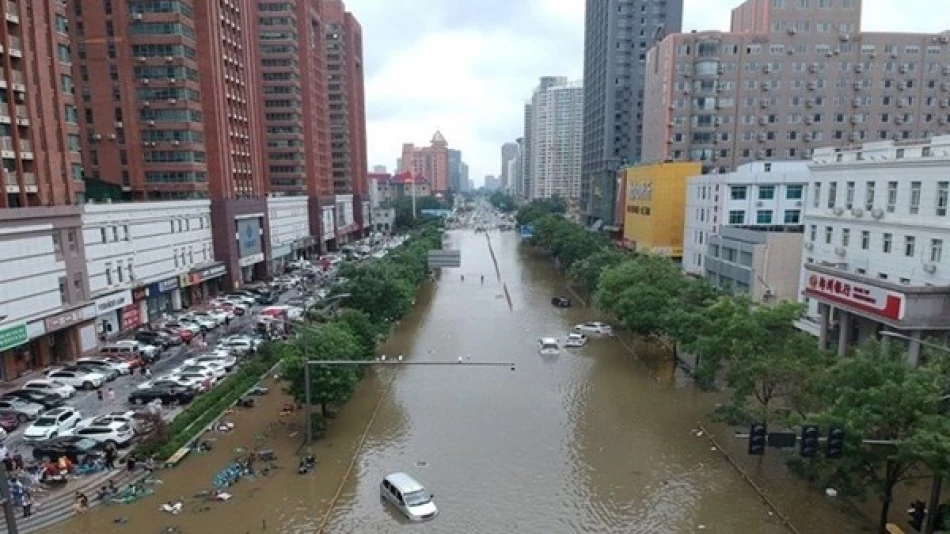
Thousands Evacuated Amid Severe Storms Sweeping Through China
China Faces Climate Reality Check as Single Storm Dumps Year's Worth of Rain in 24 Hours
Northern China is grappling with the intensifying reality of extreme weather as torrential storms delivered nearly an entire year's rainfall to Baoding city in just one day, forcing over 19,000 residents to evacuate their homes. The deluge highlights China's growing vulnerability to climate-driven weather events that are becoming more frequent and severe across the world's second-largest economy.
Record-Breaking Rainfall Rewrites Weather History
The city of Yi, located in Baoding's western district, recorded a staggering 447.4 millimeters of rainfall within 24 hours—nearly 90% of the region's typical annual precipitation of just over 500 millimeters. The extreme weather event forced meteorological stations across Hebei Province to update their historical records, underscoring the unprecedented nature of this storm system.
China's National Meteorological Administration reported that 19,453 people from 6,171 families were evacuated, though authorities have not disclosed the locations of temporary shelters. Social media footage showed police officers in rain gear standing in flooded streets as torrential rains continued through the night.
A Pattern of Escalating Weather Extremes
This latest flooding episode fits into a troubling global pattern of extreme precipitation events that climate scientists have long predicted would intensify. Similar "once-in-a-century" rainfall events have struck major economies with increasing frequency—from Germany's devastating 2021 floods to record-breaking deluges in Australia and the United States.
Economic Implications for China's Growth Engine
Hebei Province, where Baoding is located, serves as a crucial industrial hub surrounding Beijing and contributes significantly to China's manufacturing output. Extreme weather events like this pose mounting challenges to supply chains, infrastructure resilience, and economic stability in regions that power China's growth.
The frequency of such events is forcing Chinese authorities to reconsider urban planning and flood management strategies. Cities across China have invested billions in "sponge city" initiatives designed to absorb excess rainfall, but the scale of these deluges is testing the limits of even advanced flood control systems.
Global Context: When Weather Becomes a Systemic Risk
China's extreme weather challenges mirror those facing other major economies. The European Union has allocated massive resources to climate adaptation following deadly floods, while the United States continues to grapple with hurricane intensification and unprecedented rainfall events. What makes China's situation particularly complex is the sheer scale—both in terms of population density and economic concentration in vulnerable coastal and northern regions.
For international businesses with supply chain exposure to northern China, events like the Baoding floods represent a growing category of operational risk that traditional insurance models struggle to price accurately. The concentration of manufacturing in weather-vulnerable regions creates potential cascade effects that could ripple through global markets.
Infrastructure Under Pressure
The mass evacuation in Baoding demonstrates both the effectiveness of China's emergency response systems and the limitations of current infrastructure. While authorities successfully moved nearly 20,000 people to safety, the need for such large-scale evacuations suggests that existing flood defenses were overwhelmed by the storm's intensity.
This dynamic is becoming familiar across major economies: emergency response capabilities improve while the underlying weather events grow more extreme, creating a costly cycle of damage and recovery that strains public resources and economic productivity.
 Layla Al Mansoori
Layla Al Mansoori







